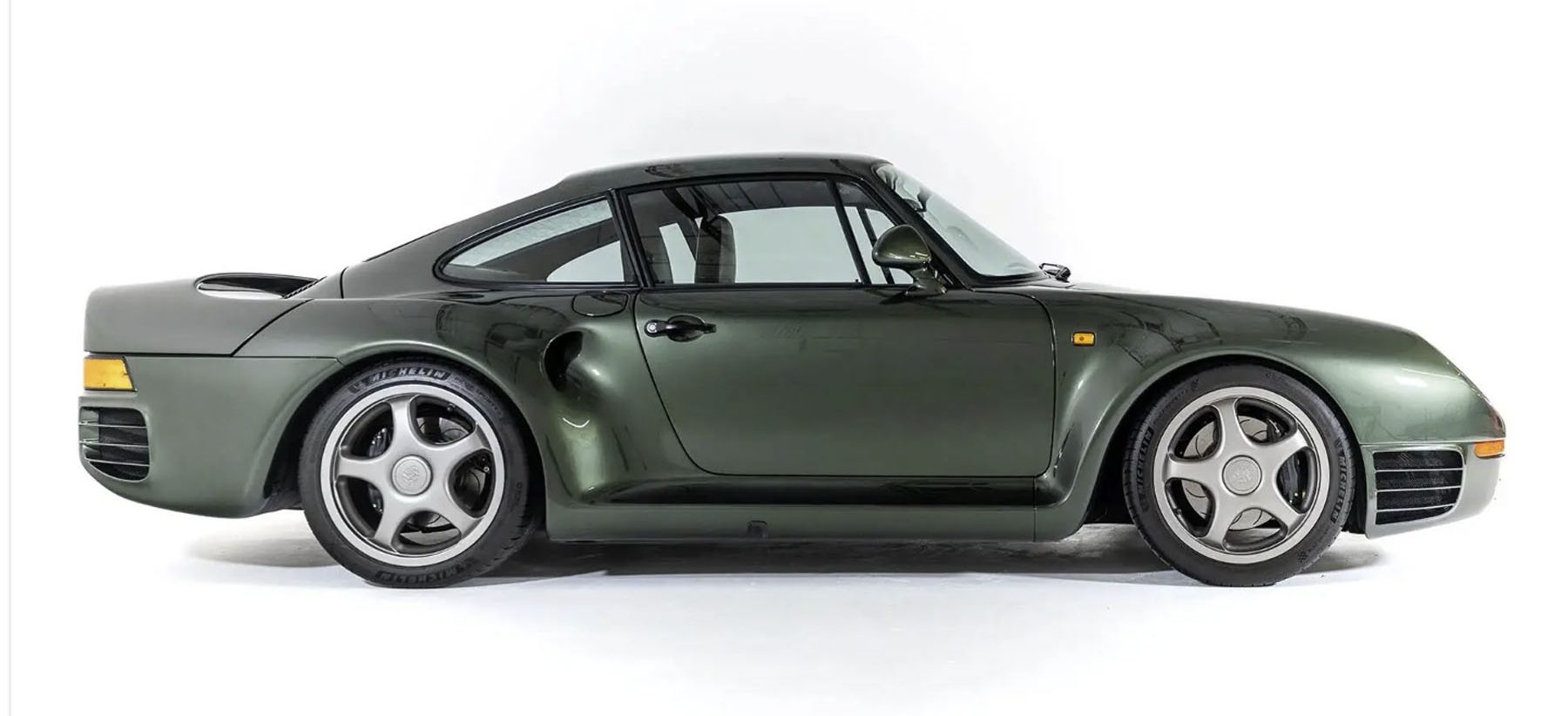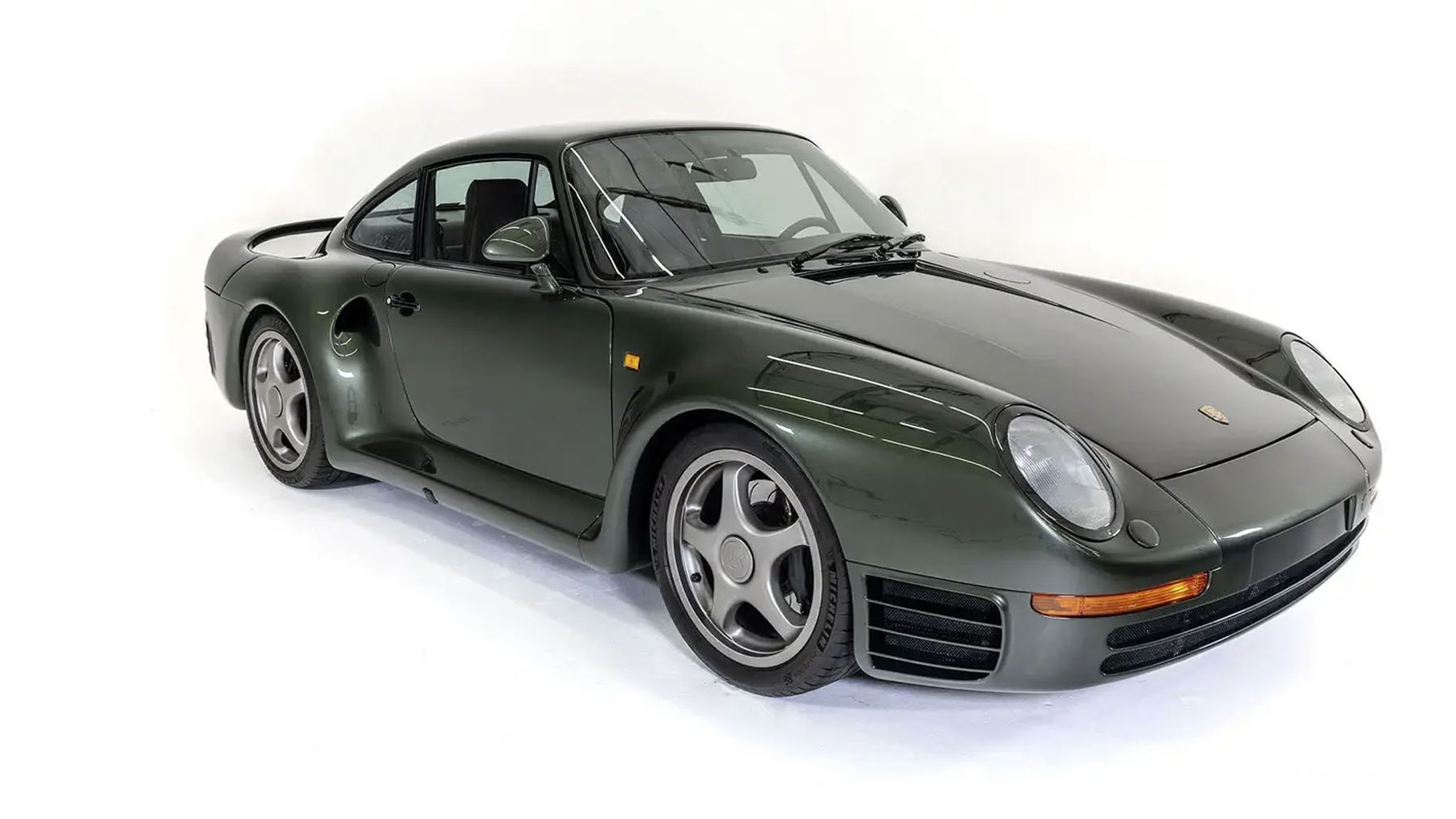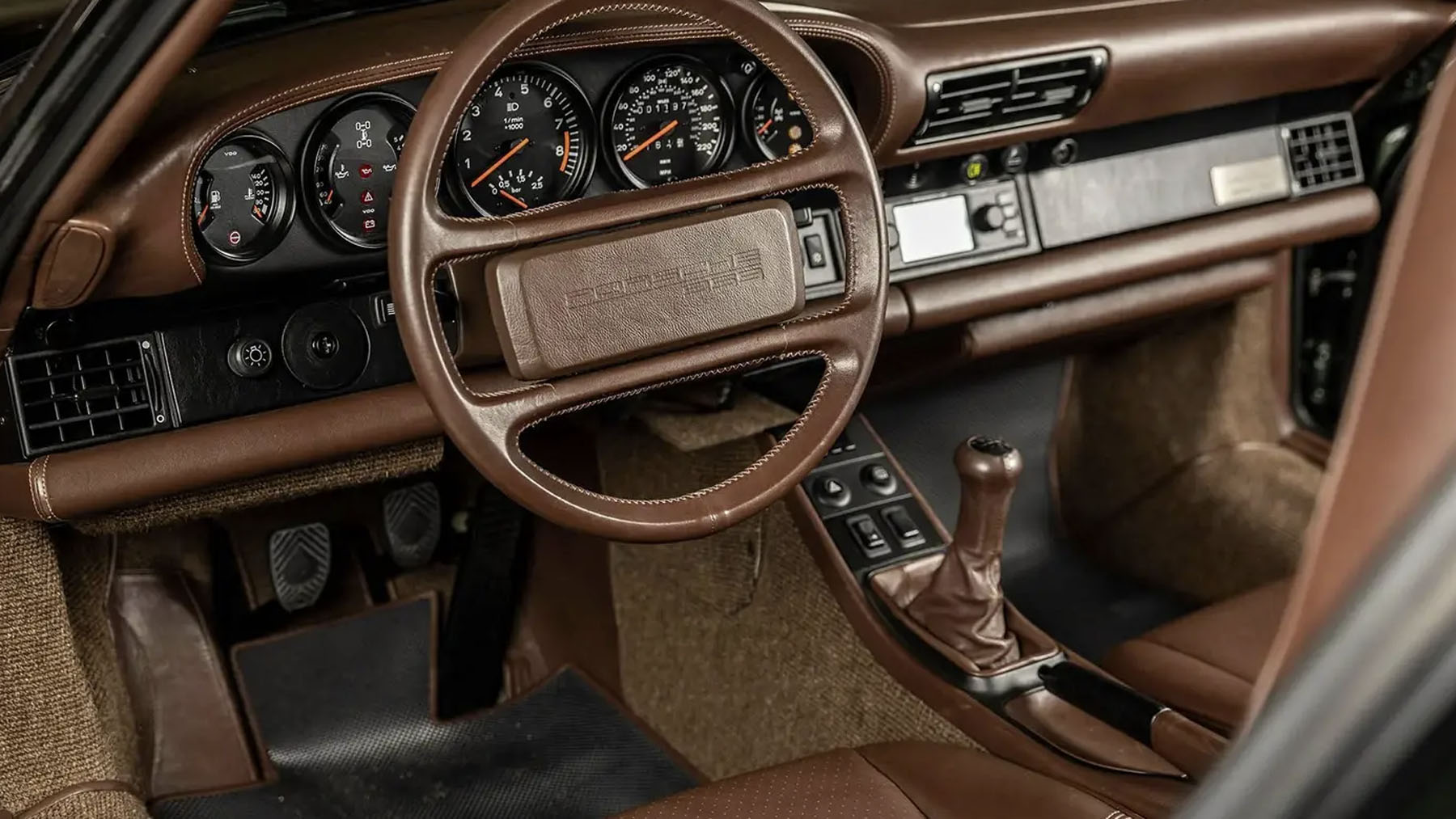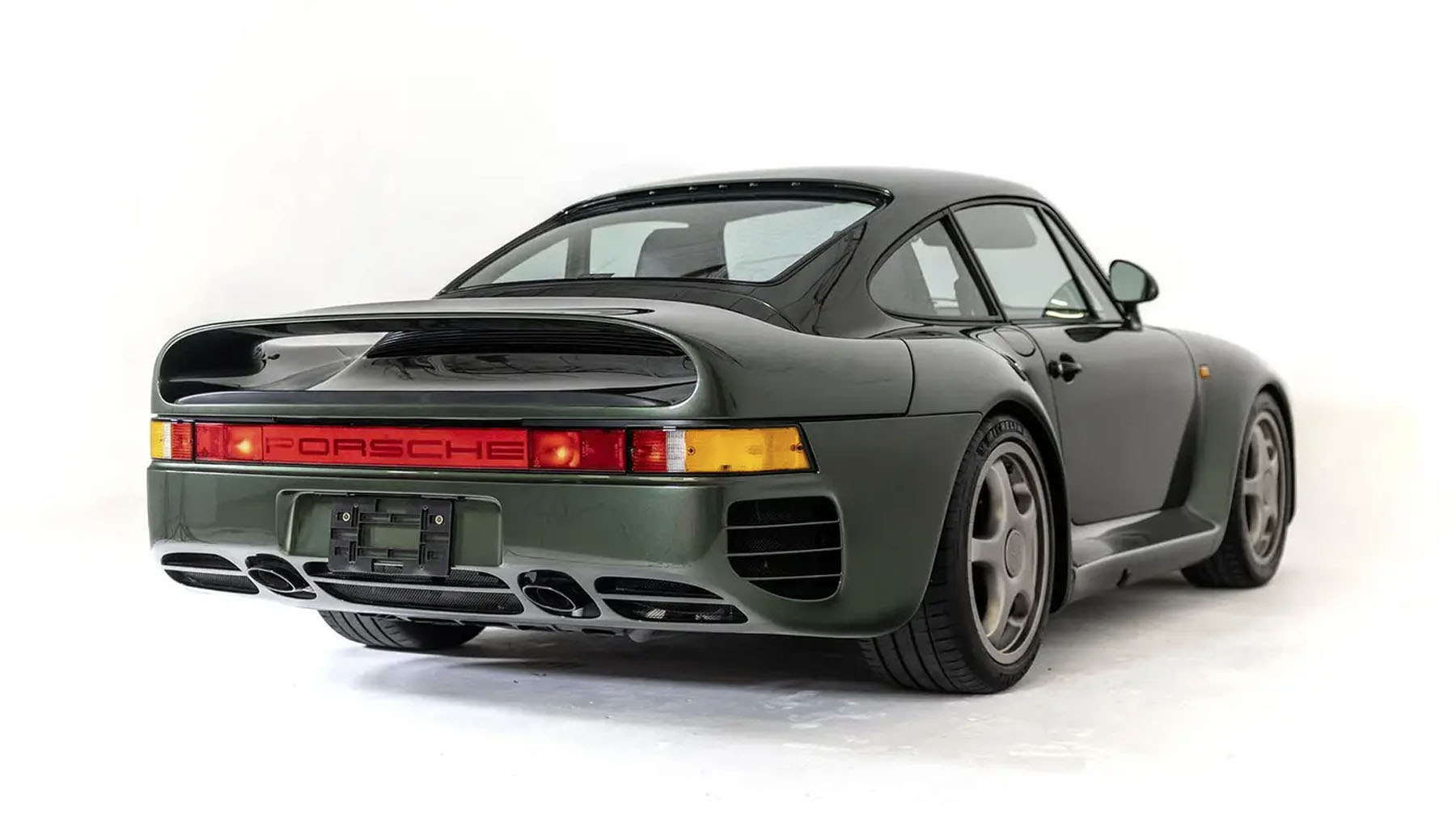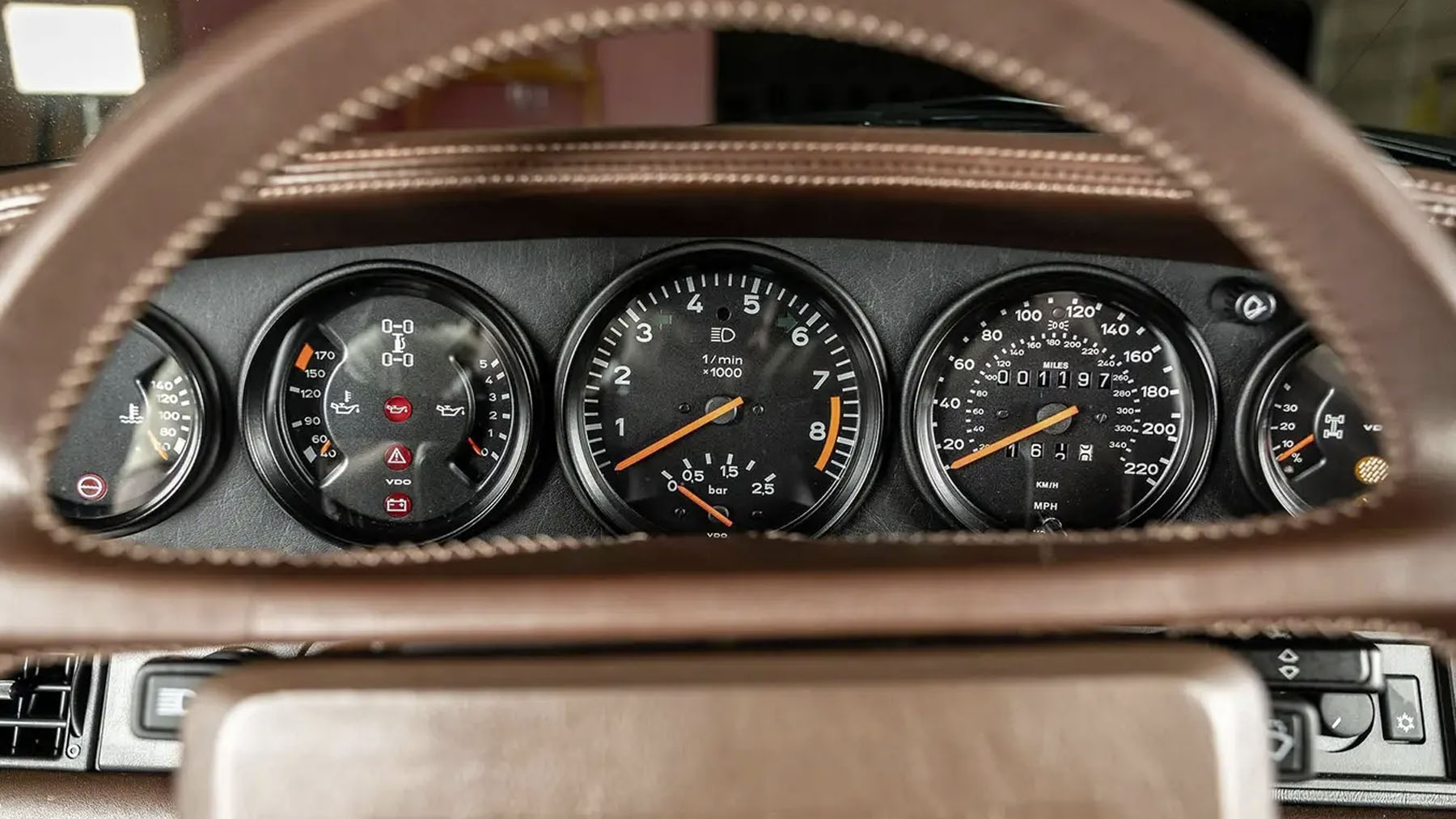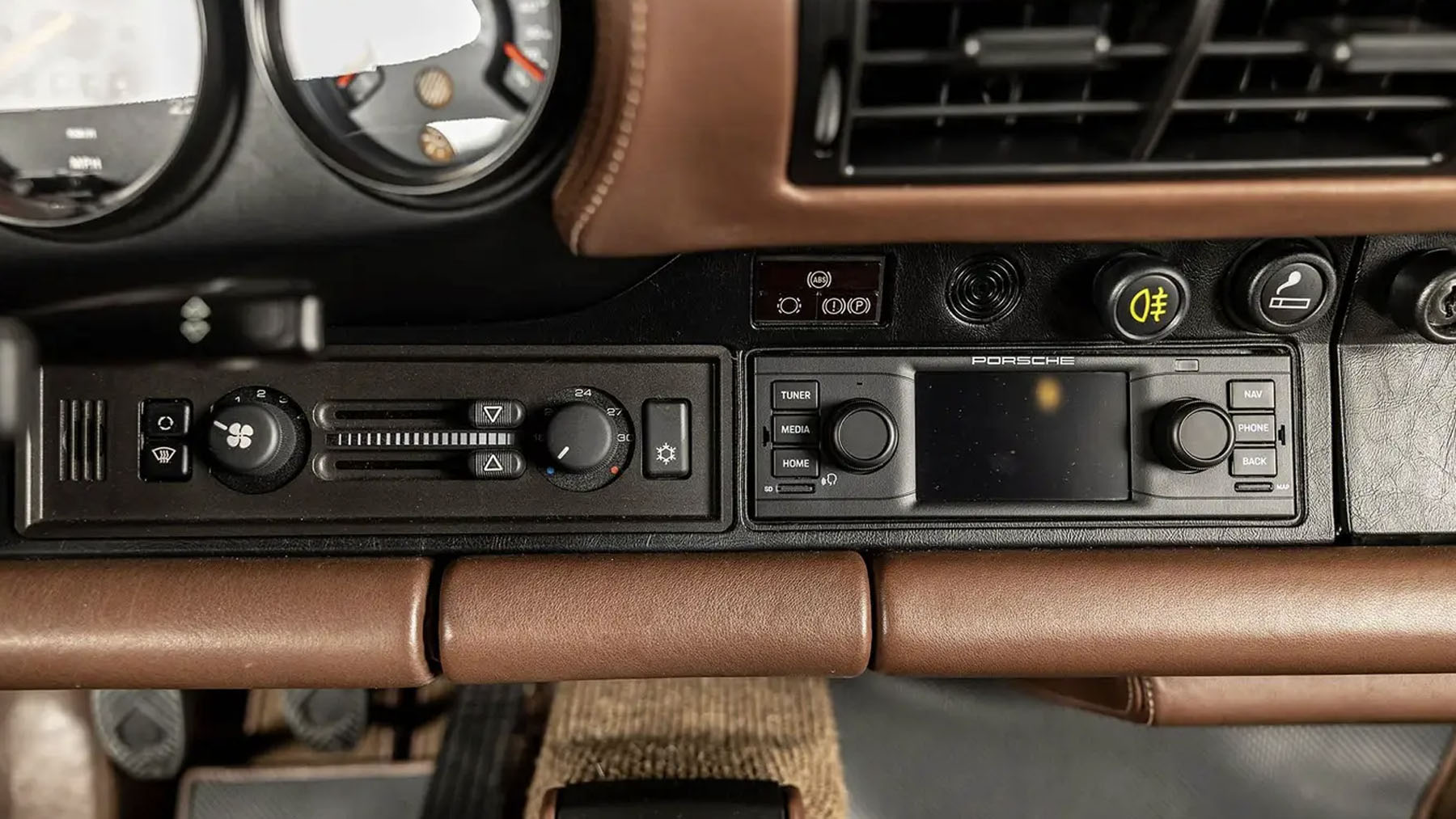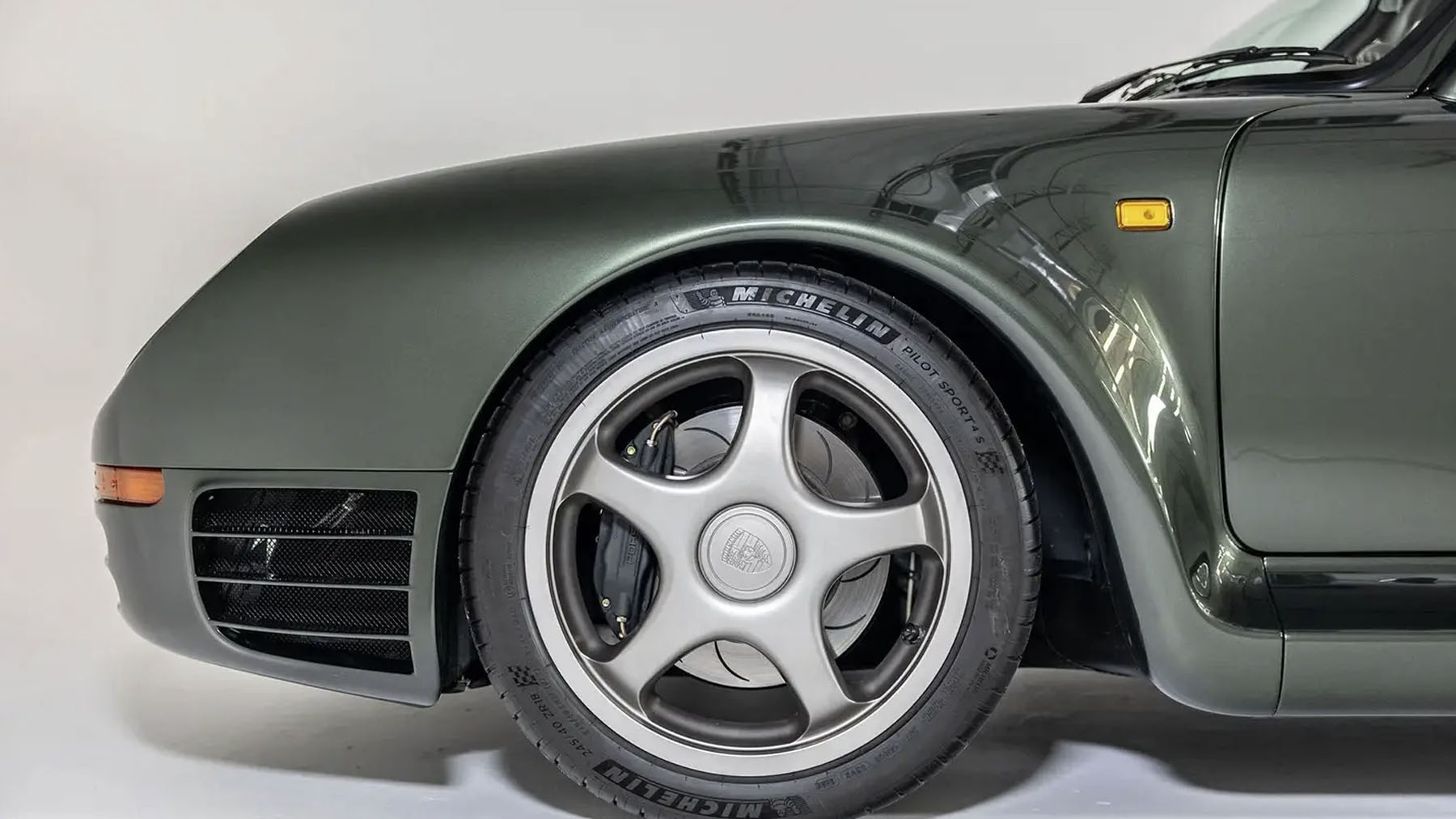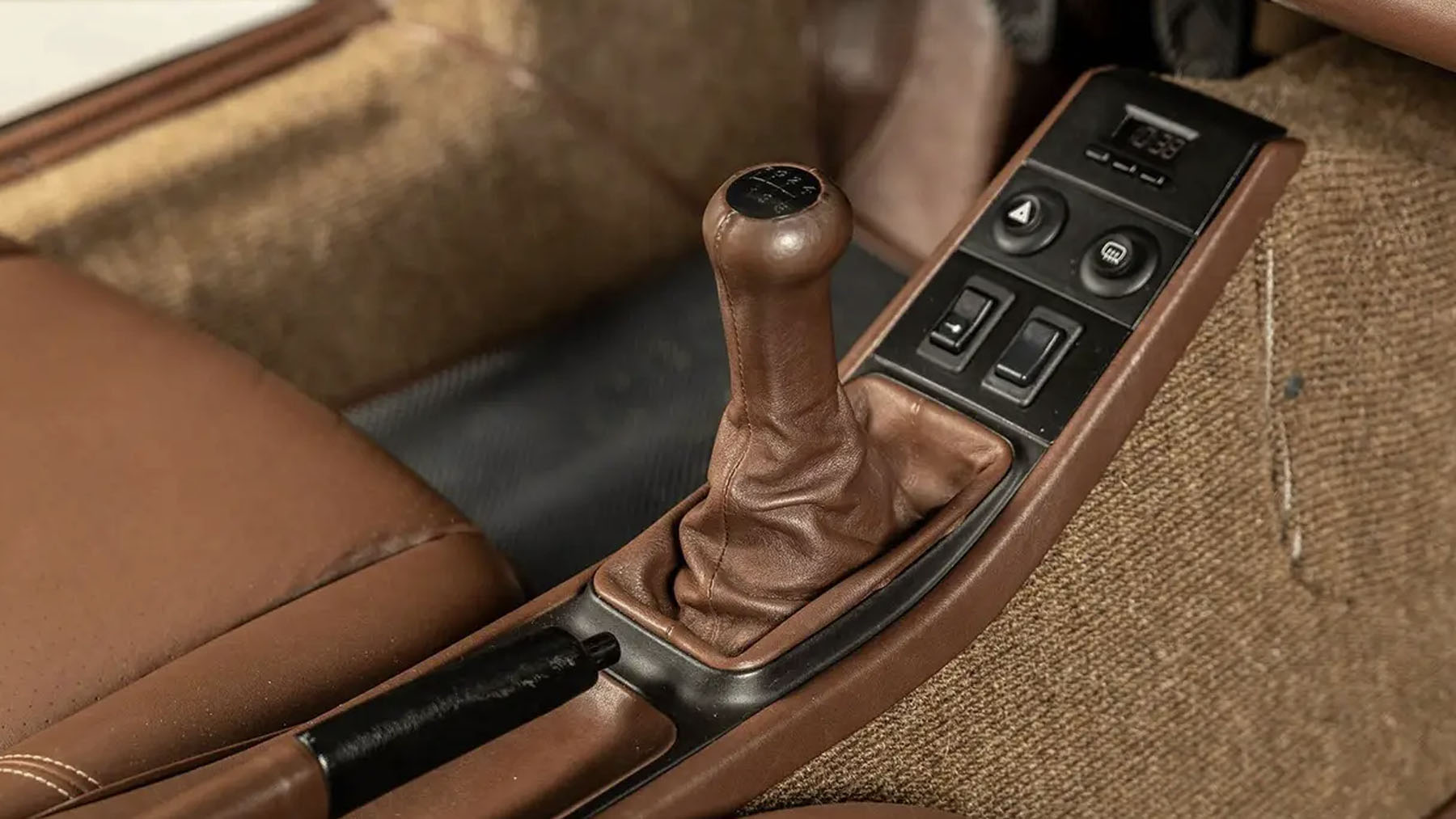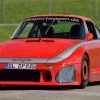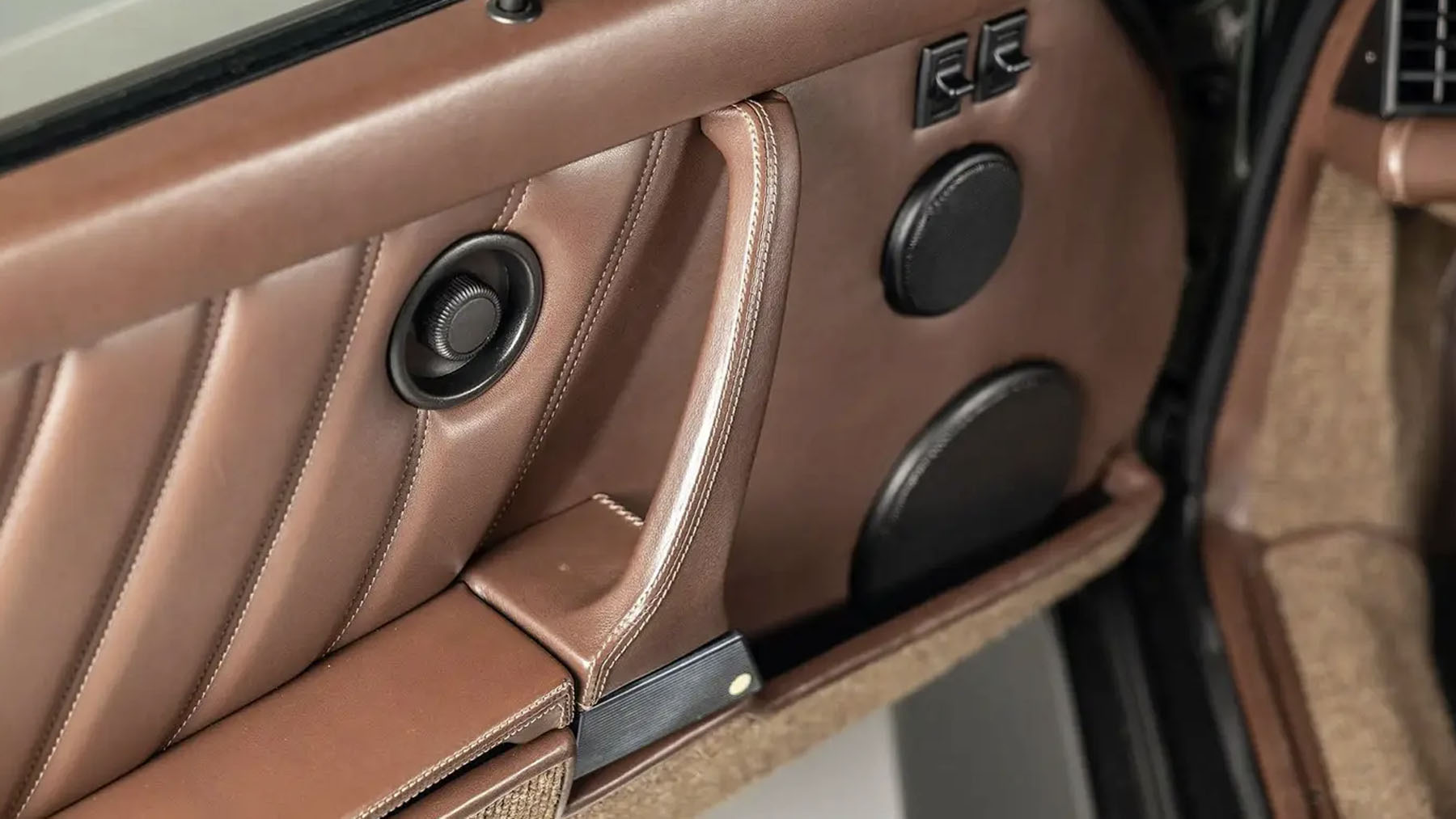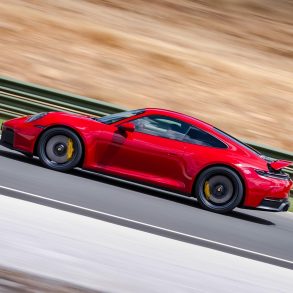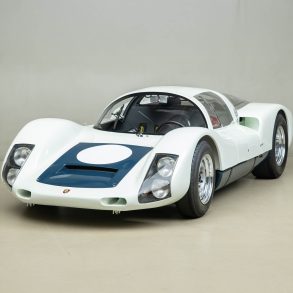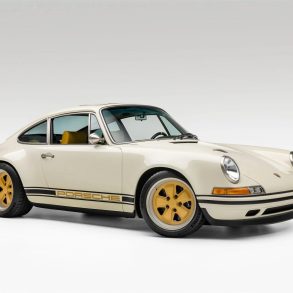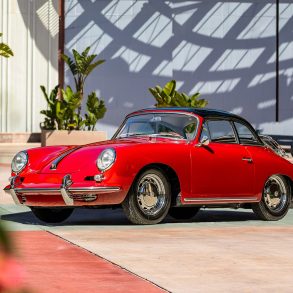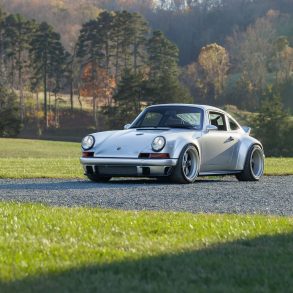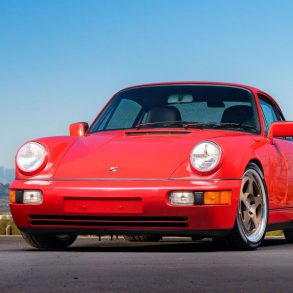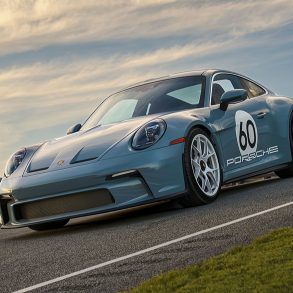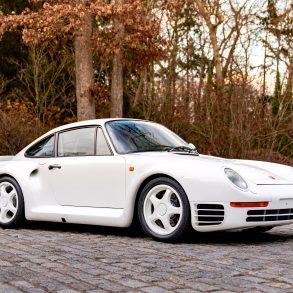Gruppe B Rally aspirations
In the early 1980s, Porsche was keen to prove its technological superiority learned throughout the previous decade’s racing efforts. The “Gruppe B” Study was created to display these advancements with development underway as soon as 1981. Turbocharging, first used on the 917/10 Can-Am racing car in 1972, made its way three years later to the first turbocharged road-going Porsche – the 1975 911 Turbo – and from it, to the 959. It was a similar story with engine cooling. Through its racing program, Porsche had reached a thermal limit with the air-cooled flat-six. Water-cooled heads appeared on the all-conquering Porsche 956 endurance racing prototype in 1982 and, just a few years later, the 959 was the beneficiary of these successful experiments. Height-adjustable suspension, “intelligent” all-wheel drive, tire pressure monitoring, ABS, composite body construction – all commonplace in today’s supercars – were decades ahead of their time when applied to the 959.
Highlights
- One of just 266 legendary 959 Komforts made, Porsche’s first supercar
- Reconfigured as a 959 SC Reimagined by Canepa between 2019 and 2023
- Features Canepa Stage III engine upgrades developing 800+ horsepower and 650 lb-ft of torque
- Finished in Oak Green with a bespoke brown leather interior
- Originally purchased by Nissan Motor Company for research and development purposes
- Offered with 1,197 total miles
Legalization in the USA
Fewer than 300 of these halo supercars were built by the end of the decade, with each example estimated to cost Porsche double its 420,000 DM price tag to produce. Faced with these substantial losses, Porsche did not see fit to modify and test the 959 to comply with NHTSA safety standards, and as a result, it was not road-legal in the United States. While a number of 959s slowly trickled into the U.S., the model was the prime example of the type of car petitioned by Canepa and others to include in the “Show or Display” rule, passed in August 1999. The rule allowed for the private importation and limited road use of certain vehicles deemed to meet a standard of “historical or technological significance,” famously enabling Bill Gates to drive his 959 after it was stored by the Customs Service for 13 years. In the decades since the rule was passed, Canepa’s ceaseless obsession with extracting as much performance as possible out of the 959 has culminated in a series of refinements and performance upgrades developed by Canepa for the standard Porsche 959, officially launched in 2015 as the “959 SC Reimagined by Canepa” program.
Reimagined by Canepa
Drawing on his many years and thousands of miles driving the 959, Canepa developed a ground-up approach to reconditioning, and in some areas outright re-engineering, every element of Porsche’s already superb creation. Starting with only the most original examples, the talented team at Canepa’s Scotts Valley, California headquarters begin by carefully disassembling the entire car to the bare steel unibody. At this stage, all of the body panels are stripped, primed, and block sanded to perfection in preparation for paintwork. Canepa’s unrelenting attention to detail can be observed on the driver’s side quarter panel, where the auxiliary door for the hydraulic suspension oil on 959 Komfort models is deleted by molding a new composite body panel. Clients are able to choose from Porsche’s own factory Paint-to-Sample palette of over 150 unique shades, or to create a custom color of their choice. The virtually limitless personalization offered by Canepa’s service extends to the cabin, where over 400 hours are spent hand-stitching an entirely new leather interior with countless colors and stitching options from Porsche’s own factory offerings. Swaths of leather trim every element of the interior – including components that were not originally upholstered from the factory – while numerous upgrades ensure a 21st century driving experience. These include Porsche’s Classic Radio Navigation system connected to an upgraded six-speaker system, LED cabin and gauge lighting, and a switch located on the center console to control the two-stage sport exhaust system.
Nut & Bolt
While a one-of-a-kind appearance is being crafted by Canepa’s in-house paint and upholstery departments, over 4,000 individual mechanical components are inspected, refinished, rebuilt, or upgraded by technicians with over two decades of experience working with the Porsche 959. Quite literally nothing goes untouched, with every bolt, clamp, and fitting being stripped and replated in a variety of coatings such as zinc, anodizing, powder coating, and Teflon.
Suspension
Starting with the suspension, the 959 SC opts for the weight savings and simplicity of the coil-over spring and shock assembly found on the factory 959 Sport specification – thus eliminating the adjustable ride height and its related hydraulic system on Komfort models. In its place, the Canepa suspension upgrade employs custom-valved Penske shock absorbers with titanium coil-over springs for a one-inch lower ride height while still providing ample ground clearance for real-world driving. All four corners also feature specially developed cryo-treated semi-floating brake rotors with upgraded brake pads for improved stopping power. Housing these improved brakes are 18-inch wheels custom-designed by Canepa and Michelin to mirror the 18-inch wheels originally featured on the Gruppe B concept car. While radial tire technology in the 1980s forced Porsche to revert to a 17-inch wheel for production 959s, Canepa’s wheel upgrade allows 959 SC owners to take advantage of the grip and comfort offered by the modern tire technology while retaining the timeless look of the original 959.
Engine
Initially developed for Group B class homologation and tracing its lineage back to the powerplants in the 936, 956, and 962 sports prototypes, the 959’s 2.8-liter twin-turbocharged flat-six was designed to handle significantly more power than the 444 horsepower and 369 lb-ft of torque it left the factory with. After three decades spent optimizing the existing engine components as well as engineering new ones, the 959 SC’s flat-six now develops a staggering 800+ horsepower and 650 lb-ft of torque with Canepa’s Stage III upgrades. These encompass Pankl titanium connecting rods, a blueprinted and upgraded valvetrain assembly, upgraded camshafts and camshaft housings, tungsten ceramic coated headers and two-stage stainless/titanium exhaust system, a MoTec engine management system and wiring harnesses, and two state-of-the-art BorgWarner turbochargers. The robust six-speed manual transmission is also treated to a full rebuild as well as REM isotropic superfinishing on gears and shafts and an upgraded clutch assembly to ensure a reliable and competent package. The result is otherworldly, modern-supercar performance, including zero to 60 miles per hour in 2.5 seconds and a top speed in excess of 230 miles per hour.
Nissan History
This 959 Komfort was, according to documentation on file, purchased by Nissan Motor Company, reportedly with the intention of reverse engineering the Porsche’s sophisticated variable all-wheel drive system. After initially attempting to order a new 959 through Porsche AG and having their bold order rejected, Nissan liaised through Belgian distributor and dealer D’Ieteren Brothers to have chassis 022 shipped to a Belgian national and then exported to Yokohama, Japan. With the 959 in their possession, Nissan disassembled the car, never registering or titling it, intended strictly as a benchmark for research and development purposes. The lessons learned from chassis 022 ultimately informed Nissan’s own Advanced Total Traction Engineering System for All terrains and Electronic Torque Split (ATTESA ET-S) found on the all-conquering R32 GT-R, which would go on to win every single All-Japan Touring Car Championship race from 1990 to 1993. With their research concluded, Nissan quietly sold the 959 to one of Nissan’s own engineers involved with the project who retained the car up until its importation to the United States, never registering it in Japan.
Now Available
This Porsche 959 SC Reimagined by Canepa presents the rare opportunity to acquire one of the most exclusive and earth-shattering supercars of the 1980s – so advanced that other manufacturers continue to view it as the benchmark for technology, engineering, and performance decades after production ceased. Rarer still is the chance to experience the full potential of the 959 platform achieved through decades of research and development to bring the legendary model into the 21st century.
For more information, go HERE
Above content © 2024 Broad Arrow Group, Inc.


